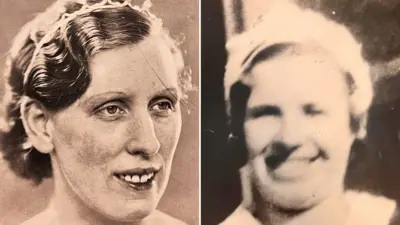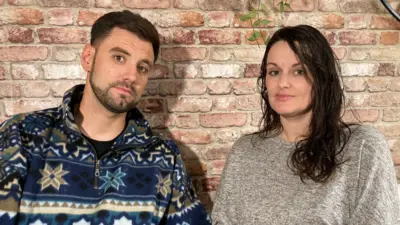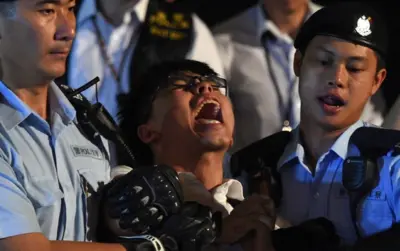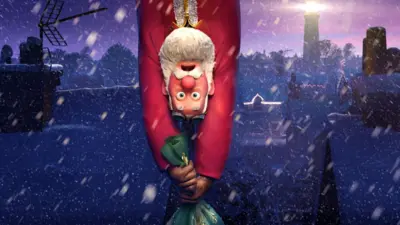We've updated our Privacy and Cookies Policy
We've made some important changes to our Privacy and Cookies Policy and we want you to know what this means for you and your data.
Lost indigenous language revived in Australia
- Author, Phil Mercer
- Role, 91╚╚▒¼ News, Sydney
An Aboriginal language crushed under the weight of European colonisation in Australia has been revived, thanks to the dedication of researchers and the vision of 19th Century German missionaries.
The Kaurna language once thrived and was spoken by the original inhabitants of Adelaide. But it began to disappear from daily use in South Australia as early as the 1860s.
Ivaritji, an elder who was thought to be the last fluent speaker of Kaurna, died in the late 1920s. More than 80 years later, its unique sounds have been brought back to life.
"It is about self-identity and cultural identity as well," explained Vincent "Jack"' Buckskin, who runs evening courses for both Aboriginal and non-indigenous students.
"At first it is a little bit difficult to learn and is very different to English, which is what we all grew up with," he said.
"To say hello to one person, you say 'niinamarni'. It means 'are you good' as well. To ask if someone is having a good day, you'd say 'niinamarnitidli'.
"Our language was pretty much banned in the 1800s, and it wasn't until around the 1980s that a linguist started doing his PhD on the revitalisation of the language and re-teaching a lot of our elders," Mr Buckskin explained.
'Deliberate subversion'
To restore this ancient tongue, researchers trawled through historical archives produced by religious groups and colonial officials to bring it back from the dead.
It has been a painstaking piece of detective work that owes an immense debt to two Germans, Christian Teichelmann and Clamor Schurmann.
Within 18 months of their arrival in South Australia in 1838, the missionaries had produced a definitive vocabulary of about 2,000 Kaurna words, around 200 translated sentences and key elements of grammar.
The Ten Commandments, half a dozen German hymns and a school prayer were also translated.
The pair also opened a school that used the Kaurna language as a medium of instruction for almost six years before it was closed down by the authorities, who would only tolerate English.
"With colonisation came the deliberate subversion of these languages," said Dr Bill Fogarty from the National Centre for Indigenous Studies at the Australian National University.
"At the time of colonisation there were about 250-300 indigenous languages in Australia. Around half of those languages are now gone."
Of the estimated 150 languages still spoken, Dr Fogarty says that only a handful - about 6% - are considered "strong" and are still spoken as a mother tongue, while many others are endangered.
There are several hotspots of linguistic activity across much of northern Australia and in the central desert region around Alice Springs.
'Coming alive'
In Maningrida, in Central Arnhem Land east of Darwin, 3,000 indigenous residents speak seven completely different languages and about 22 distinctive dialects within a relatively small area.
Dr Fogarty says such rich diversity is a repository of thousands of years ecological, spiritual and social knowledge built up by generations of Australia's first peoples.
Preserving this living history, he insists, is essential.
"The role of indigenous languages in development for remote communities is very strong," Dr Fogarty adds.
"It is also very important symbolically that indigenous languages are maintained in Australia as they are part of our national fabric."
Dr Robert Emery, who specialises in linguistics at the University of Adelaide, agrees that these ancient ways are cultural treasures.
"The Kaurna language belongs to this place, to the Adelaide Plains, so it has the kind of vocabulary, the words to talk about the places here, to talk about the environment, to talk about the species that inhabit this environment," he said.
Kaurna has not only been resurrected, it is growing.
Vincent Buckskin and his fellow linguistic travellers have created new words and terms based on original grammar and structures - panpapanpalya means conference, warraityi is a phone (literally the voice-sending thing), while computer is mukarntu (lightening brain).
While only a handful of students are fluent so far, Mr Buckskin is optimistic about the future.
"I've got a young daughter who is only one-and-a-half, and I only speak this language to her, so she will be our first fluent speaker from birth since Ivaritji, who died in the 1920s," he said.
Kaurna is back from the dead. Or as native speakers, would say, "Purrunarninthi," - it is "coming alive".
Top Stories
More to explore
Most read
Content is not available








